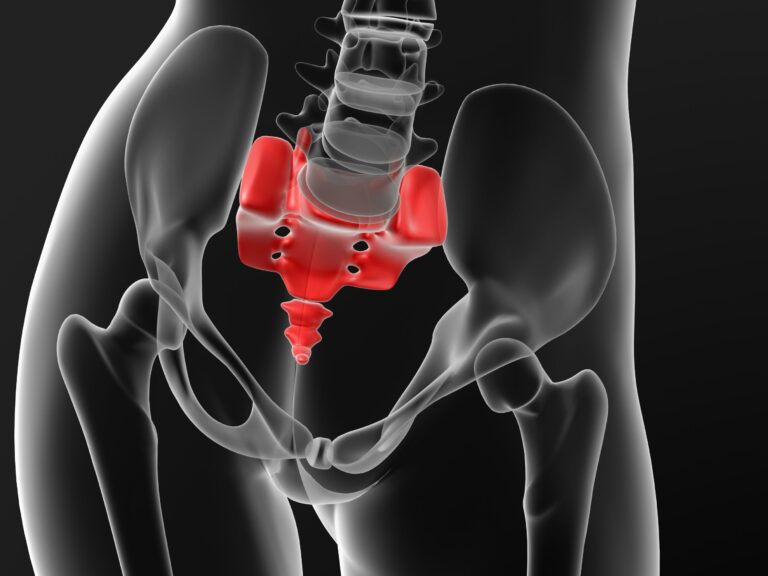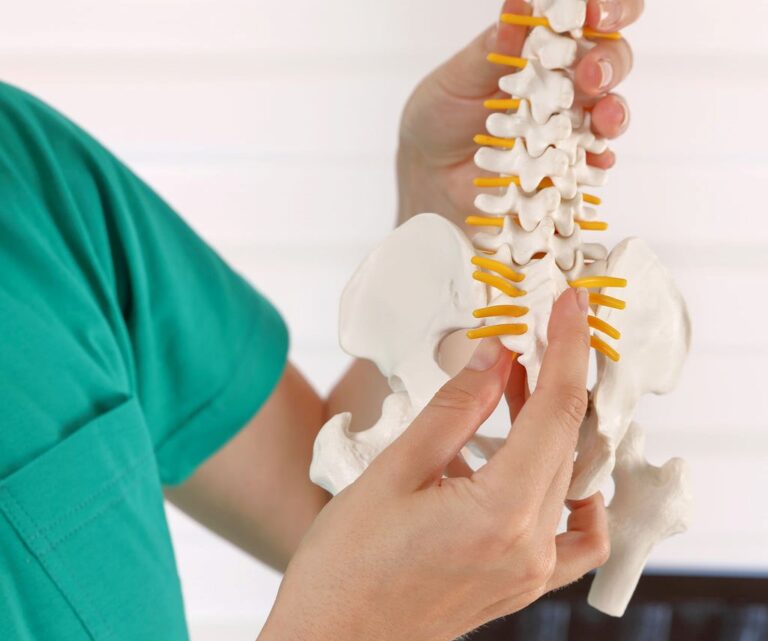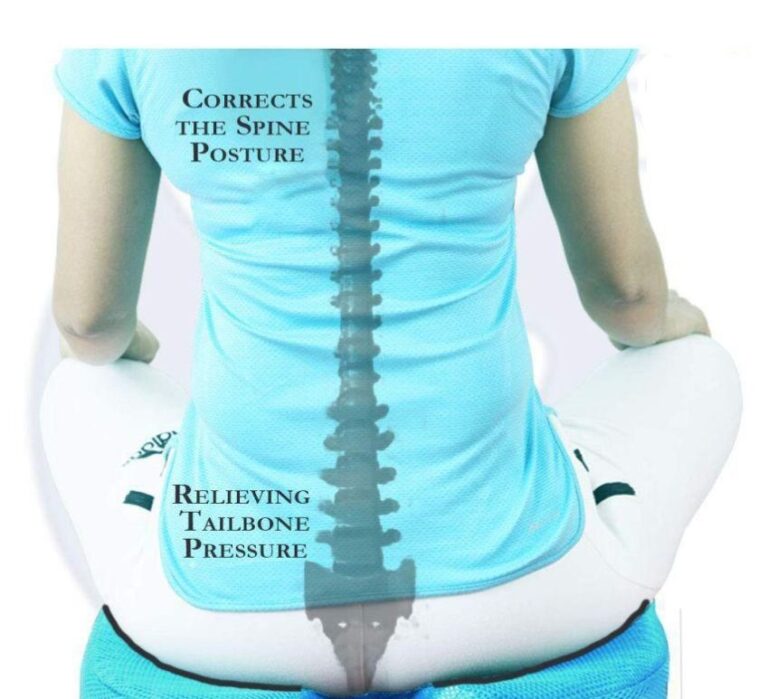WHAT TO KNOW ABOUT COCCYX FRACTURE?
Coccyx or tailbone although serves no specific purpose in humans but serves as one leg of the pelvic tripod. This helps provide weight-bearing support to us in the seated position. A tailbone is a triangle-shaped bone consisting of three to five different sections, which can make it difficult to detect a broken tailbone.
Our tailbone is curved at the end, but the degree of curvature varies from person to person. The part of your upper body weight rests on your coccyx whenever you sit down. Tailbone can break or get injured which can be very painful, especially when you sit down. Bruising of tailbone or ligament pull in the neighboring area is more common in comparison to tailbone breaks, or fractures, which are fairly uncommon.

The warning sign of a broken tailbone is the same as bruised tailbone making it difficult to diagnose. The broken tailbone may lead to:
- Being displaced causes the bone fragments to be separated.
- A hairline fracture, wherein the broken pieces are not separated.
- Being comminuted causes the bone to break into multiple pieces
WHAT CAUSES THE TAILBONE FRACTURE?
Some of the common causes of tailbone or coccyx fracture can result from:
- Trauma or a direct injury: This is the most common cause of tailbone fracture or crack. Car accidents or playing contact sports such as hockey increases the risk of tailbone fractures. Falling onto the tailbone in the seated position, especially against a hard surface leads to the tailbone fracture.
- Age: Among youngsters, a tailbone fracture occurs mostly due to a backward fall or a high-energy accident. Sometimes in older adults, nutritional deficiencies can make broken bones more common.
- Weight: The coccyx rotates under the body when seated in a thin or average-weight person. This helps absorb weight better. But, in a heavier person, with larger buttocks, the pelvis and coccyx rotate less when sitting. The lesser rotation puts more stress on the tip of the coccyx causing it to dislocate or break.

- Gender: Rarely, childbirth can also lead to fractures of the coccyx. The coccyx is vulnerable to injury during difficult labor, or labor that requires the use of instruments, due to its location in the body. Although, tailbone bruises are more common than fractures. Females are almost more certain than guys to encounter tailbone wounds.
- Underlying medical issues: Some of the medical problems like osteoporosis, osteopenia, or bone deterioration increases your risk of tailbone fracture. The bone spurs, compression of nerve roots, injuries to other parts of the spine, local infections, and tumors may also cause the tailbone to crack.
WHAT ARE THE SYMPTOMS OF TAILBONE FRACTURE?
The most common sign of tailbone fracture is lower back pain or pain radiating to the legs. Some of the other symptoms include:
- Constant dull pain in the very low back, just above the buttocks.
- Pain worsens when sitting and standing up from a sitting position.
- Swelling around the tailbone.
- Pain worsening during a bowel movement.
- Pain worsening during sexual intercourse.
- Irregular bowel movements.
- Frequent need to defecate.
- Numbness or tingling in the leg.
HOW TO IDENTIFY TAILBONE FRACTURE?

Your primary care physician will perform a physical examination and X-rays to analyze your tailbone pain. To confirm the tailbone fracture, your PCP will feel the delicate tissue around your coccyx and the lower spine (sacrum). They may also be able to identify a sharp development of new bone, known as a bone spicule, which could be the reason for pain.
They’ll also check for reasons for the pain, like cancer, an ingrown hair pimple, or pelvic muscle fits. During a rectal exam, your primary care physician holds the coccyx between the forefinger and thumb to check for its movement. The ordinary scope of movement is around 13 degrees. An excessive amount of more or a lot of less can be an indication of an issue.
X-rays are taken both in standing and sitting positions. The PCP will compare the angle of the coccyx in the two positions to determine the degree of motion. X-rays can also confirm if the tailbone is broken or just bruised.
HOW IS TAILBONE FRACTURE TREATED?
Tailbone fracture is different from other broken bones. As it is not possible to put the tailbone in a cast and immobilize it. The primary care physician might recommend using different techniques to reduce the pain such as:
- Coccyx Cushion: These are specially designed cushions helpful for relieving pain from a broken tailbone. This cushion has a hole cut out in the middle to support your buttocks. This would allow you to sit without putting pressure directly on the coccyx.
- Hot and Cold Packs: This will help reduce inflammation and pain around the injury. The PCP will advise using cold packs on and off for the first 2 days after the injury. You can place a cloth between the skin and the pack so that it does not feel uncomfortable. After 2 days you should use warm soaks.

- Nonsteroidal anti-inflammatory drugs and acetaminophen: These prescribed medications from PCP provide pain relief. Some other OTC medications include opiates, ibuprofen, acetaminophen or paracetamol, aspirin, and naproxen.
- A standing desk: If you spend a lot of time at a computer or desk, using a standing desk can be helpful while recovering from a broken tailbone.
- Surgery or coccygectomy: Specialists might suggest steroids or nerve blocks assuming that the torment is exceptionally extreme. Going through a medical procedure for a broken tailbone is rare. The specialists suggest this when all choices have not worked and the pain is disrupting. Surgery is suggested in severe conditions such as hypermobility (too much freedom of motion) of the coccyx and those with spicules (sharp-pointed, new bone growth) on the coccyx.
OUTLOOK
Coccyx fracture is a rare and painful injury that can affect people of all ages, from young athletes to older adults. Although they might be delayed to recover, most coccyx wounds can be made do with wary treatment. The tailbone fracture recovery can require as long as 12 weeks, and individuals should rest during the recovery time. A few light activities can assist with reinforcing the muscles nearby.
If you or anyone you know is suffering from pain near the tailbone, our expert providers at Specialty Care Clinics will take care of your health and help you recover.
Call us on (469) 545-9983 to book an appointment with our specialists.
